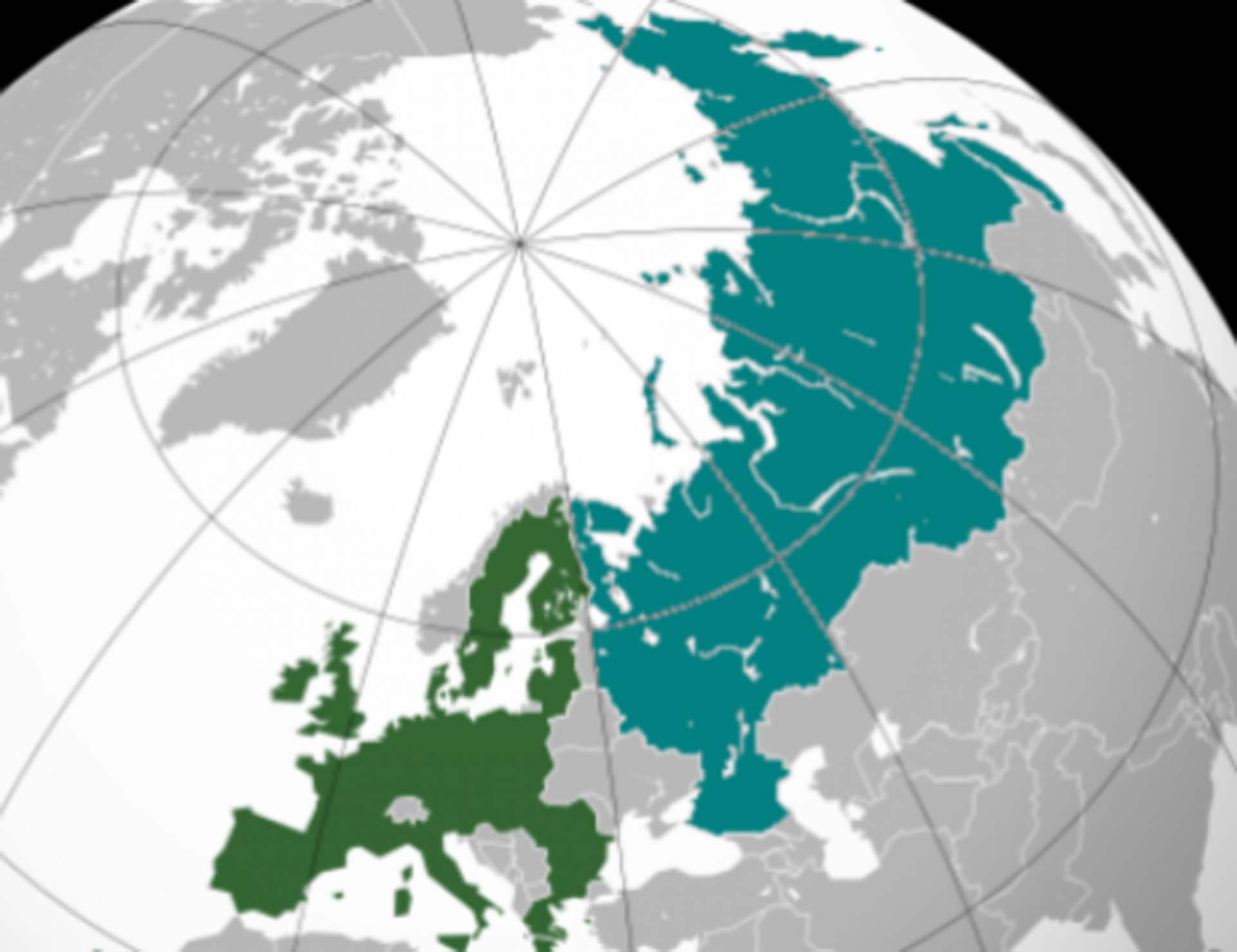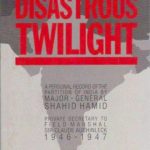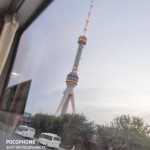By Mike Whitney
“Russia is an inalienable and organic part of Greater Europe and European civilization. Our citizens think of themselves as Europeans…That’s why Russia proposes moving towards the creation of a common economic space from the Atlantic to the Pacific Ocean, a community referred to by Russian experts as ‘the Union of Europe’ which will strengthen Russia’s potential in its economic pivot toward the ‘new Asia.’ March 23, 2017 “Information Clearing House” – The relentless demonization of Vladimir Putin is just one part of Washington’s multi-pronged strategy to roll-back Russian power in Central Asia and extinguish Putin’s dream of a “Greater Europe”. Along with the attempt to smear the Russian president as a “KGB thug” and “dictator”, the media has also alleged that Moscow intervened in the US presidential elections and that Russia is a serial aggressor that poses a growing threat to European and US national security.
The media onslaught, which has greatly intensified since the election of Donald Trump in November 2016, has been accompanied by harsh economic sanctions, asymmetrical attacks on Russia’s markets and currency, the arming and training of Russian adversaries in Ukraine and Syria, the calculated suppression of oil prices, and a heavy-handed effort to sabotage Russia’s business relations in Europe. This is why the US State Department joined with the CIA to topple the elected government of Ukraine in 2014. Washington hoped that by annexing a vital landbridge between the EU and Asia, US powerbrokers could control critical pipeline corridors that are drawing the two continents closer together into an alliance that will exclude the United States. The prospect of Russia meeting more of the EU’s growing energy needs, while China’s high-speed railway system delivers more low-cost manufactured goods, suggests that the world’s center of economic gravity is shifting fast increasing the probability that the US will continue on its path of irreversible decline.
And when the US dollar is inevitably jettisoned as the primary means of exchange between trade partners in the emerging Asia-EU free trade zone, then the recycling of wealth into US debt will drop off precipitously sending US markets plunging while the economy slips into a deep slump. Preventing Putin from “creating a harmonious community of economies from Lisbon to Vladivostok” is no minor hurtle for the United States. It’s a matter of life and death. “Our first objective is to prevent the re-emergence of a new rival, either on the territory of the former Soviet Union or elsewhere, that poses a threat on the order of that posed formerly by the Soviet Union. is a dominant consideration underlying the new regional defense strategy and requires that we endeavor to prevent any hostile power from dominating a region whose resources would, under consolidated control, be sufficient to generate global power.”
Washington’s relations with Russia will always be fractious because Russia poses a perennial threat to US ambitions to rule the world. Geography is fate, and Russia’s geography contains massive oil and gas reserves that Europe needs to heat its homes and fuel its businesses. The symbiotic relationship between supplier and end-user will eventually lead to the lifting of trade barriers, the lowering of tariffs, and the smooth melding together of national economies into a region-wide common market. This may be Washington’s biggest nightmare, but it’s also Putin’s top strategic priority. Here’s what he said: “We must consider more extensive cooperation in the energy sphere, up to and including the formation of a common European energy complex. The Nord Stream gas pipeline under the Baltic Sea and the South Stream pipeline under the Black Sea are important steps in that direction. These projects have the support of many governments and involve major European energy companies.
Once the pipelines start operating at full capacity, Europe will have a reliable and flexible gas-supply system that does not depend on the political whims of any nation. This will strengthen the continent’s energy security not only in form but in substance. This is particularly relevant in the light of the decision of some European states to reduce or renounce nuclear energy.” If Europe wants a reliable partner that can meet its energy needs, then Russia fits the bill. Unfortunately, the US has repeatedly tried to sabotage both pipelines in order to undermine EU-Russia relations.
Washington would prefer that Europe either dramatically curtail its use of natural gas or find other more expensive alternatives that don’t involve Russia. In other words, Europe’s material needs are being sacrificed for Washington’s geopolitical objectives, the primary goal of which is to prevent the forming of Greater Europe. Washington’s war against Russia is becoming increasingly militarized. Recently the Pentagon deployed more combat troops to Syria and Kuwait suggesting that US warplanners intend to shift from the current strategy of arming jihadist militias (to topple the government of Syrian President Bashar al Assad), to a more direct use of martial force to seize-and-hold territory in East Syria.
There are signs of an uptick in the violence in Ukraine too, as President Trump appears only-too-eager to use a more iron-fisted approach in settling regional disputes than his predecessor, Barack Obama. Also, NATO has deployed troops and weaponry to Russia’s western flank while the US has spread its military bases across Central Asia. NATO has continued to push eastward ever since the Berlin Wall fell in November 1989. The steady buildup of hostile armies on Russia’s western perimeter has been a source of growing concern in Moscow and for good reason. Russians know their history. At the same time the US is building a ground-based missile defense system in Romania (Star Wars) that integrates the US nuclear arsenal at a site that is just 900 miles from Moscow. The US missile system which was “certified for operation” in May 2016, cancels-out Russia’s nuclear deterrents and destroys the strategic balance of power in Europe.
Putin has responded by ordering appropriate countermeasures. Here are Putin’s comments on the subject: “It seems that NATO countries, and especially the United States, have developed a peculiar understanding of security which is fundamentally different from our own. The Americans are obsessed with the idea of ‘absolute invulnerability’ for themselves… But absolute invulnerability for one nation means absolute vulnerability for everybody else. We cannot agree to this.” In the last week, the Trump administration announced that it will deploy the Terminal High Altitude Area Defense (THAAD) system to South Korea citing a need to respond to provocations by North Korea. In truth, Washington is using the North as a pretext for its plan to hem in Russia and China at “axial ends” of the Eurasian heartland as a means of containing the vast landmass that Sir Halford Mackinder called the “pivot area… stretching from the Persian Gulf to China’s Yangtze River.”
Washington hopes that by controlling critical sea lanes, encircling the region with military bases, and aggressively inserting itself where necessary, it can prevent the emergence of an economic colossus that will diminish the United States role as global superpower. America’s future rests on its ability to derail economic integration at the center of the world and prevail in the Great Game where others have failed. Here’s an excerpt from an article by Alfred W. McCoy titled The Geopolitics of American Global Decline” which helps to shed light on the struggle that is now taking place for control over the so called “world island”:
Following World War II the US became “the first power in history to control the strategic axial points “at both ends of Eurasia” … With fears of Chinese and Russian expansion serving as the “catalyst for collaboration,” the U.S. won imperial bastions in both Western Europe and Japan. With these axial points as anchors, Washington then built an arc of military bases that followed Britain’s maritime template and were visibly meant to encircle the world island….“Having seized the axial ends of the world island from Nazi Germany and Imperial Japan in 1945, for the next 70 years the United States relied on ever-thickening layers of military power to contain China and Russia inside that Eurasian heartland. Stripped of its ideological foliage, Washington’s grand strategy of Cold War-era anticommunist “containment” was little more than a process of imperial succession. …
By the Cold War’s end in 1990, the encirclement of communist China and Russia required 700 overseas bases, an air force of 1,763 jet fighters, a vast nuclear arsenal, more than 1,000 ballistic missiles, and a navy of 600 ships, including 15 nuclear carrier battle groups all linked by the world’s only global system of communications satellites….(“The Geopolitics of Global Decline”, Alfred W. McCoy) For the last 70 years the imperial strategy has worked without a hitch, but now Russia’s resurgence and China’s explosive growth are threatening to break free from Washington’s stranglehold.
The Asian allies have begun to crisscross Central Asia and Europe with pipelines and high-speed rail that will gather together the far-flung statelets scattered across the steppe, draw them into a Eurasian Economic Union, and link them to an expansive and thriving superstate, the epicenter of global commerce and industry. Grand Chessboard brain-trust Zbigniew Brzezinski summed up the importance of Central Asia in his 1997 classic stating: “Eurasia is the globe’s largest continent and is geopolitically axial. A power that dominates Eurasia would control two of the world’s three most advanced and economically productive regions. ….
About 75 per cent of the world’s people live in Eurasia, and most of the world’s physical wealth is there as well, both in its enterprises and underneath its soil. Eurasia accounts for 60 per cent of the world’s GNP and about three-fourths of the world’s known energy resources.” A new global empire is gradually emerging in Central Asia, and while the transformative impact of economic integration has not yet been realized, US efforts to block the embryonic alliance are getting weaker and more desperate all the time. The hyperbolic propaganda about the alleged “Russia hacking” of the presidential election is just one example of this, while the arming of Nazi militants in Kiev is another. The bottom line is that both Russia and China are using markets, development and raw ingenuity to beat Washington, while Washington relies almost exclusively on deception, covert activity and hard power. In other words, the former communists are beating the capitalists at their own game. Here’s more from McCoy: “China is reaching deep within the world island in an attempt to thoroughly reshape the geopolitical fundamentals of global power. It is using a subtle strategy that has so far eluded Washington’s power elites….
The initial step has involved a breathtaking project to put in place an infrastructure for the continent’s economic integration. By laying down an elaborate and enormously expensive network of high-speed, high-volume railroads as well as oil and natural gas pipelines across the vast breadth of Eurasia, China may realize Mackinder’s vision in a new way. For the first time in history, the rapid transcontinental movement of critical cargo oil, minerals, and manufactured goods will be possible on a massive scale, thereby potentially unifying that vast landmass into a single economic zone stretching 6,500 miles from Shanghai to Madrid. In this way, the leadership in Beijing hopes to shift the locus of geopolitical power away from the maritime periphery and deep into the continent’s heartland….”
Washington is not going to let the Russo-China plan go forward without a fight. If economic sanctions, covert activity and financial sabotage don’t work, then US powerbrokers will implement more lethal strategies. The recent deployment of troops to the Middle East suggests that policymakers believe that a direct military confrontation might be the best available option; after all, a shooting war with Russia in Syria or Ukraine would not necessarily escalate into a full-blown nuclear conflagration. No one wants that. But if the fighting can be contained within Syria’s borders, then it would be a practical way to rally the EU allies, torpedo Russia’s “economic integration” plan, and draw Moscow into a long, resource-draining quagmire. Is that what US war-planners have in mind? It’s a risky plan, but one that Washington would eagerly pursue if it helped to reinforce America’s global supremacy.







